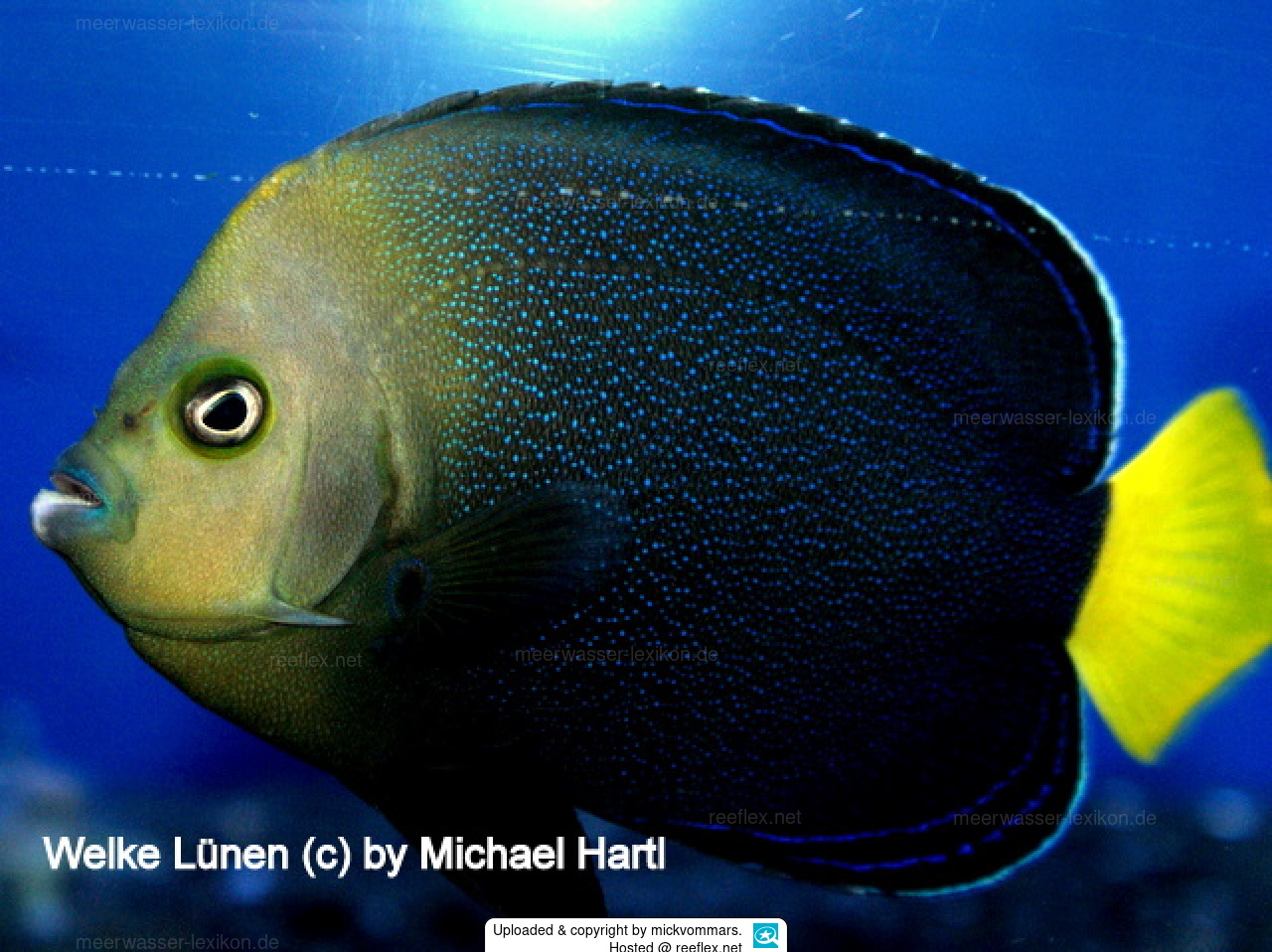Info
Yasuda & Tominaga, 1976
Hiroyuki Tanaka: Blue-spotted Angelfish ( Chaetodontoplus caeruleopunctatus) Philippines only; 12 cm; not uncommon It was misidentified by us, in Angelfish (Debelius, Tanaka & Kuiter, 2003) shown as C.chrysocephalus, another valid one from Indonesia; blue dots are scattered in full length of body, but in C.chrysocephalus with blue lines and dots; although almost no photo for the species in nature is available, shipment from Cebu is frequent; it usually dies in tanks in some period, probably due to collectors’ choice of cyanide.
Synonyme:
Limia matamorensis Girard, 1858
Limia poeciloides Girard, 1858
Mollienesia latipinna Lesueur, 1821
Mollienisia latipinna Lesueur, 1821
Poecilia lineolata Girard, 1858
Poecilia multilineata Lesueur, 1821
Classification: Biota > Animalia (Kingdom) > Chordata (Phylum) > Vertebrata (Subphylum) > Gnathostomata (Superclass) > Pisces (Superclass) > Actinopterygii (Class) > Cyprinodontiformes (Order) > Poeciliidae (Family) > Poeciliinae (Subfamily) > Poecilia (Genus) > Poecilia latipinna (Species)
Hiroyuki Tanaka: Blue-spotted Angelfish ( Chaetodontoplus caeruleopunctatus) Philippines only; 12 cm; not uncommon It was misidentified by us, in Angelfish (Debelius, Tanaka & Kuiter, 2003) shown as C.chrysocephalus, another valid one from Indonesia; blue dots are scattered in full length of body, but in C.chrysocephalus with blue lines and dots; although almost no photo for the species in nature is available, shipment from Cebu is frequent; it usually dies in tanks in some period, probably due to collectors’ choice of cyanide.
Synonyme:
Limia matamorensis Girard, 1858
Limia poeciloides Girard, 1858
Mollienesia latipinna Lesueur, 1821
Mollienisia latipinna Lesueur, 1821
Poecilia lineolata Girard, 1858
Poecilia multilineata Lesueur, 1821
Classification: Biota > Animalia (Kingdom) > Chordata (Phylum) > Vertebrata (Subphylum) > Gnathostomata (Superclass) > Pisces (Superclass) > Actinopterygii (Class) > Cyprinodontiformes (Order) > Poeciliidae (Family) > Poeciliinae (Subfamily) > Poecilia (Genus) > Poecilia latipinna (Species)







 mickvommars
mickvommars




















